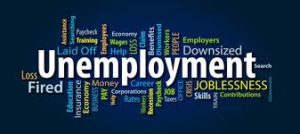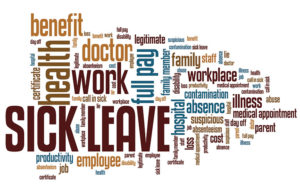
Information and Resources to Empower Employers
During the COVID-19 Pandemic
During the current coronavirus pandemic, every day brings new data, concerns, and challenges regarding the spread of the virus, government messaging and directives, and economic and social impacts. Throughout, Leap Solutions remains dedicated to keeping our clients informed and empowered by delivering relevant, up-to-the-minute information and resources calmly, quickly and responsibly.
Our HR specialists are here to help you get a handle on the complexities of ever-changing guidelines, programs and legislation that may directly impact you and your employees as well as work with you to come up with practical solutions and smart planning decisions for your organization’s immediate, near and long-term needs.

Furloughs, Layoffs, Terminations
Decisions for Business Owners during the Coronavirus
There are many ways for a relationship between an employer and an employee to end. Layoff, Furlough, Reduction in Force or Discharged? What do they all mean?
A lay-off is due to conditions that are out of the employee’s control, such as a lack of work or the company’s financial situation. Sometimes, being laid off means that you still have a chance to be employed again if conditions improve. A layoff is a separation from payroll and employees are typically able to collect unemployment benefits while on an unpaid layoff. The employee should receive their final paycheck, including all accrued vacation/paid time off (PTO), on the date the employee is laid off.
A furlough (temporary layoff) is considered to be an alternative to layoff. When an employer furloughs its employees, it requires them to work fewer hours or to take a certain amount of unpaid time off, but the individual remains an employee. Any wages owed are paid on the regular pay dates. A furloughed employee may apply for unemployment for missed work hours. A furloughed employee will not be eligible for the expanded FMLA paid leave and paid sick leave when Families First goes into effect on April 1, 2020, until work becomes available.
A reduction in force (RIF) occurs when a position is eliminated without the intention of replacing it and involves a permanent cut in headcount. A layoff may turn into a RIF or the employer may choose to immediately reduce their workforce. The employee should receive their final paycheck, including all accrued vacation/ PTO, on the date of termination.
A discharge happens regardless of the financial situation of a company. Depending on the reason for the discharge, it can be permanent. A discharge can be done by an employer or employee depending on its type. Final pay, including vacation/PTO, is required on the employee’s last day of work.
- Voluntary discharge: Voluntary discharge means the employee resigns from a job. Life events that can lead to voluntary discharge include retirement, education, starting a new job, relocation or a medical condition. Employers should request a resignation letter from the employee.
- Involuntary discharge: Involuntary discharge means that an employer dismisses an employee from the company. Usually, the employee will receive a termination letter. An employer may choose to release an employee for reasons such as misconduct or unsatisfactory completion of job responsibilities.
- Mutual agreement: A mutual agreement is shared between an employer and an employee. In this case, the employee agrees to exercise the at-will clause in their employment agreement.

California WARN Act
The California Worker Adjustment and Retraining Notification (WARN) Act requires most employers with 75 or more employees to provide 60 calendar-day advance notification of plant closings and mass layoffs. A mass layoff is defined under the California WARN Act as
- The elimination of fifty (50) or more jobs during any thirty (30)-day period, due to lack of work or lack of funds.
- A relocation means moving all or substantially all of the commercial or industrial operations at a given location to a new location at least one hundred (100) miles away.
- A termination (plant closure) means the cessation or substantial cessation of industrial or commercial operations.
On March 17, 2020, Governor Gavin Newsom issued Executive Order N-31-20 which only suspends the California WARN Act’s 60-day notice requirement for those employers that satisfy the Order’s specific conditions. An employer seeking to rely on the Executive Order’s suspension of the California WARN Act’s 60-day advance notice requirement must satisfy the following three conditions:
- The employer’s mass layoff, relocation or termination must be caused by COVID-19-related “business circumstances that were not reasonably foreseeable at the time that notice would have been required.”
- The employer must provide written notices to:
-
- Employees affected by the mass layoff, relocation or termination;
- The EDD; the Local Workforce Development Board; and the chief elected official of each city and county government within which the termination, relocation, or mass layoff occurs.
-
- The employer must provide written notice that satisfies the following requirements:
- Give as much notice as is practicable (e., reasonably possible) at the time notice is given.
- Provide a brief statement as to why the 60-day notification period could not be met. Include the following information in the notice to each affected employee:
- A statement as to whether the planned action is expected to be permanent or temporary and, if the entire location is to be closed, a statement to that effect
- The expected date when the plant closing or mass layoff will commence and the expected date when the individual employee will be separated
- An indication whether or not bumping rights exist
- The name and telephone number of a company official to contact for further information
- The following statement: “If you have lost your job or been laid off temporarily, you may be eligible for Unemployment Insurance (UI). More information on UI and other resources available for workers is available at labor.ca.gov/coronavirus2019.”
- The notice may include additional information useful to the employees such as, if the planned action is expected to be temporary, the estimated duration, if known.
- Include the following information in the notices separately provided to the EDD, the Local Workforce Development Board, and the chief elected official of each city and county government within which the termination, relocation, or mass layoff occurs:
- Name and address of the employment site where the closing or mass layoff will occur.
- Name and phone number of a company official to contact for further information.
- A statement as to whether the planned action is expected to be permanent or temporary and, if the entire location is to be closed, a statement to that effect.
- Expected date of the first separation, and the anticipated schedule for subsequent separations.
- Job titles of positions to be affected, and the number of employees to be laid off in each job classification.
- In the case of layoffs occurring at multiple locations, a breakdown of the number and job titles of affected employees at each location.
- An indication as to whether or not bumping rights exist.
- Name of each union representing affected employees, if any.
- Name and address of the chief elected officer of each union, if applicable.
- The notice may include additional information useful to the employees such as, if the planned action is expected to be temporary, the estimated duration, if known.
Additional information and other resources are available at Labor & Workforce Development Agency – Coronavirus 2019 (COVID-19) Resources for Employers and Workers.

What are the implications for employers regarding the Families First Coronavirus Response Act as it relates to furloughs, layoffs, reduction in force, or discharge?
Prior to April 1, 2020
Employers who were forced to close their business made a decision to set their employees up to work from home or if that was not an option they sent their employees home to shelter in place. Employers who could not provide teleworking should have provided their employees with a letter or Change in Reporting Relationship letting them know which employment action (see above) was taken. Employers should also check in with their broker/insurance company to see how benefits can be handled during the shelter in place if employees are not able to work the required number of hours to maintain benefits. Employees who were laid off or furloughed with no hours are not eligible for the new paid sick leave or the Expanded Family and Medical Leave as this does not go into effect until April 1, 2020.
Employees should apply for unemployment benefits as soon as the employee was sent home as the one week waiting period has been waived. For faster and more convenient access to those services, employees are encouraged to use the online options. For more information please read How to Set Up a UI Online Account (DE 2338H) (PDF) to help you apply for benefits.
After April 1, 2020
After April 1, 2020, any employee still working, even if working reduced hours will be eligible for the new paid sick leave under the Emergency Paid Sick Leave Act and the Expanded Family and Medical Leave under the Emergency Family and Medical Leave Expansion Act. An employee laid off or furloughed with no scheduled hours would no longer be eligible for the paid sick leave or the expanded family and medical leave until working hours become available.

Unemployment Benefits
Unemployment Insurance is a joint state-federal program that provides cash benefits to eligible workers who are unemployed through no fault of their own. In general, benefits are based on a percentage of the employee’s earnings over a recent 52-week period. Typically, there is a one-week waiting period for individuals obtaining unemployment insurance; however, the Governor’s Emergency Proclamations waives the non-payable one-week waiting period to eligible individuals affected by the current COVID-19 disaster. Also, The Coronavirus Aid, Relief, and Economic Security (CARES) Act includes a significant expansion of unemployment benefits that would extend jobless insurance payments by 13 weeks. CA weekly UI benefit amount can range from $40 to $450 per week. CARES also includes a temporary four-month enhancement of benefits (ends July 31, 2020), called Federal Pandemic Unemployment Compensation (FPUC), which would boost the maximum unemployment benefit by $600 per week in addition to, and in the same timeframe as, regular state or federal unemployment benefits.
The CARES Act also extends unemployment insurance to workers who usually aren’t eligible for such benefits at the state level—so long as their unemployment is connected to the coronavirus outbreak. Those who will now be eligible include part-time employees, freelancers, independent contractors, gig workers, and the self-employed.
In addition to full unemployment benefits, employers may also be eligible for other state programs:
Partial claims
Partial claims are for employees whose employers want to keep them when there is a lack of work. A partial Unemployment Insurance claim can be used for any claimant who works less than their normal full-time hours, and whose employers want to keep them. Employers should download Notice of Reduced Earnings (DE 2063) (PDF), complete the top section. These forms need to be done on a weekly bases, Sunday – Saturday regardless of your payroll schedule. Once completed, the employer should forward the form to their employees to complete the claim and submit it to EDD. For more information, visit Partial Claims.
Work Sharing Program
Employers can apply for the Unemployment Insurance (UI) Work Sharing Program if reduced production, services, or other conditions cause them to seek an alternative to layoffs. The Work Sharing Program helps employees whose hours and wages have been reduced. To participate, employers must meet all of the following requirements:
- Be a legally registered business in California.
- Have an active California State Employer Account Number.
- At least 10 percent of the employer’s regular workforce or a unit of the workforce, and a minimum of two employees, must be affected by a reduction in hours and wages.
- Hours and wages must be reduced by at least 10 percent and not exceed 60 percent.
- Health benefits must remain the same as before, or they must meet the same standards as other employees who are not participating in Work Sharing.
- Retirement benefits must meet the same terms and conditions as before, or they must meet the same as other employees not participating in Work Sharing.
- The collective bargaining agent of employees in a bargaining unit must agree to voluntarily participate and sign the application for Work Sharing.
- Identify the affected work units to be covered by the Work Sharing plan and identify each participating employee by their full name and Social Security number.
- Notify employees in advance of the intent to participate in the Work Sharing program.
- Identify how many layoffs will be avoided by participating in the Work Sharing program.
- Provide the EDD with any necessary reports or documents relating to the Work Sharing plan.
Restrictions
- Leased, intermittent, seasonal, or temporary service employees cannot participate in the Work Sharing Program.
- Corporate officers or major stockholders with investment in the company cannot participate in the Work Sharing Program.
- The Work Sharing Program cannot be used as a transition to a layoff.
For more information, visit Work Sharing.
If your business is directly affected by COVID-19, you can request up to a 60-day extension to file your state payroll reports and deposit state payroll taxes without penalty or interest. Include the impact of COVID-19 in your written request for the extension. Your request must be received within 60 days from the original past-due date of the payment or return.
 Healthcare Coverage during the Coronavirus
Healthcare Coverage during the Coronavirus
Employers may be looking to reduce employee hours or mandate time off for (i.e. furlough) a part of their workforce due to the economic impact of the coronavirus (also known as COVID-19).
Employers may want to continue providing benefits for these employees; however, the issue an employer may face is that their benefit plan documents usually require employees to be “actively at work” and working full-time hours (e.g. 30) to be covered by the benefit plans. This means that employees who have their hours reduced or who are furloughed (even temporarily) will not be active full-time and will often have their benefits terminated after a period of time.
Employers should take the following steps to ensure compliance with their health and welfare benefit plans when providing benefits continuation:
- Review plan documents to determine requirements regarding employee eligibility and benefits continuation during unpaid/unprotected leaves of absence;
- Consider the need to amend any plan documents to accommodate new eligibility requirements (including any furlough benefits continuation policy) upon approval from all relevant carriers;
- Communicate any new requirements to employees via either a summary of the plan modification or by updating the eligibility rules in your wrap summary plan description (if approved by all relevant carriers); and
- Provide COBRA continuation coverage to employees who lose coverage due to a COBRA qualifying event.
For instance, your insurance plan may have a 30-day grace period when someone is not working full-time or a shift in their work status. What options are available after April 30, 2020? This is a key question to ask your insurance provider to ensure your employees either have coverage or can be provided COBRA continuation, which applies for employers with 20 or more employees. If less than 20 employees, Covered California may be the best option.
Regarding employer payment of health care insurance premiums, as of March 18, 2020, the State of California has requested that all insurance companies provide their insureds with at least a 60-day grace period to pay insurance premiums, so insurance policies are not canceled for nonpayment of premium.
- Applies to all admitted and non-admitted insurance companies that provide any insurance coverage in California.
- Requests that all insurance agents, brokers, and other licensees take steps to ensure customers can make prompt insurance payments.
Covered California
In the great news category for individuals finding themselves without medical coverage during the coronavirus, the State of California has reopened enrollment for Covered CA through June 30, 2020. Go to https://www.coveredca.com/individuals-and-families/getting-covered/special-enrollment/ for important information on what is available to Californians.
***
Leap Solutions is always here and ready to support you as you support your employees during these unprecedented times. Together, we can confidently address the issues and concerns at top of mind and respond to this continually evolving situation from a place of assuredness and strength.
Click here to print this newsletter

![]()
